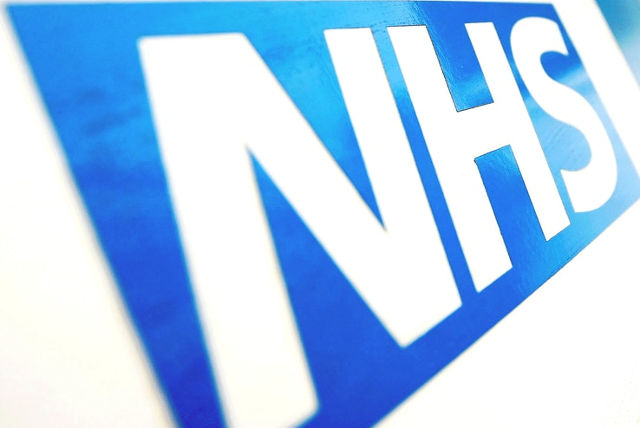More than £1 million worth of urgent repairs need to be carried out at the Isle of Wight NHS Trust in order to prevent “catastrophic” failures and risk to safety.
Data released by NHS Digital has revealed the extent of the maintenance backlog across NHS property and facilities in England, with the British Medical Association warning it is having an impact on patient care.
£6.9 million backlog of repairs
The Isle of Wight NHS Trust is currently sitting on a backlog of £6.9 million worth of repairs or replacements which should have been carried out on its buildings and equipment.
Around £1.2 million worth of the outstanding jobs are classed as ‘high risk’ repairs.
“Catastrophic failure”
This means they could cause “catastrophic failure, major disruption to clinical services or deficiencies in safety liable to cause serious injury and prosecution” if not addressed immediately.
Examples of maintenance required could include upgrading software on medical equipment, maintaining generators and boilers, and ensuring the structural integrity of buildings.
No local incidents
According to the data, which covers the 12 months to March, problems with NHS infrastructure in England led to 17,900 incidents where patients were either harmed or put at risk of harm.
The Isle of Wight NHS Trust didn’t record any incidences of this itself, however.
Injection of capital needed urgently
Chaand Nagpaul, council chair at the BMA, said there was an “urgent” need for an injection of capital funding to address the NHS’s “impoverished infrastructure”.
Siva Anandaciva, chief analyst at independent health think tank the King’s Fund, added:
“Continued underinvestment has left some hospitals delivering healthcare in buildings that are quite literally falling apart.
“Deteriorating facilities and unreliable equipment can expose staff and patients to increasing safety risks, and make NHS services less productive as operations and appointments may be cancelled at short notice.”
National picture
The repair bill across England reached a record £6 billion at the end of March.
It has risen every year since 2011-12, when it stood at £4 billion, while costs for outstanding high risk works have more than tripled over the same period.
Patients and staff deserve better
John Kell, head of policy at the Patient’s Association, said,
“It is an unsustainable situation – both patients and the staff who work in the health service deserve much better.”
Capital budget used for day-to-day spending
The NHS has a capital funding budget, which is the money to be spent on maintaining, improving or acquiring buildings and other assets rather than on the day-to-day running of services.
Over the last four years, the Department of Health and Social Care has transferred money from the capital budget into the pot for day-to-day spending.
According to NHS Providers, which represents trusts across the NHS, years of financial pressure combined with capital-to-revenue transfers have left trusts unable to address the mounting backlog.
NHS Providers: “Need to act now”
Amber Jabbal, head of policy at NHS Providers, said:
“We need to act now to ensure vital repair works are carried out to NHS buildings and equipment.
“Although more of the capital spending this year has been targeted at reducing the backlog of repairs, this is likely to have come at the expense of investing in new equipment and facilities to improve the experience of patients.
“While this approach shows trusts are rightly prioritising immediate concerns about safety, they are increasingly unable to take a longer term, strategic approach to investment.”
Last year, the Isle of Wight NHS Trust spent £1 million trying to reduce its backlog.
Investment to tackle repairs increased say Government
A Department of Health and Social Care spokesman said:
“Investment to tackle this maintenance work has increased by 25% from £324 million in 2016-17 to £404 million in 2017-18 to help trusts maintain their estates and invest in new facilities.
“We want patients to continue to receive world-class care in world-class facilities, which is why our long-term plan for the NHS will boost funding by £20.5 billion a year extra by 2023-24.
“We are also investing £3.9 billion into the NHS to help transform and modernise buildings, and improve patient care in hospitals and communities.”
IW NHS: Cost compared to others is low
A spokesperson for IW NHS Trust said:
“The estimated total cost in 2017/18 to eradicate backlog maintenance in the NHS is £6.0 billion1 .
“The £6.9m for Isle of Wight NHS Trust is the cost of doing everything in one year and compared to other Trusts with older buildings is low. The maintenance cost is risk assessed and prioritised and in 2017/18 IW NHS Trust spent2 £8.3m on capital projects which included £1.3m on backlog maintenance.”
1 https://digital.nhs.uk/data-and-information/publications/statistical/estates-returns-information-collection/summary-page-and-dataset-for-eric-2017-18#resources
2 IW NHS Trust Annual Report 2017/18 page 25
Article shared by Data Reporter as part of OnTheWight’s collaboration with Press Association and Urbs Media





